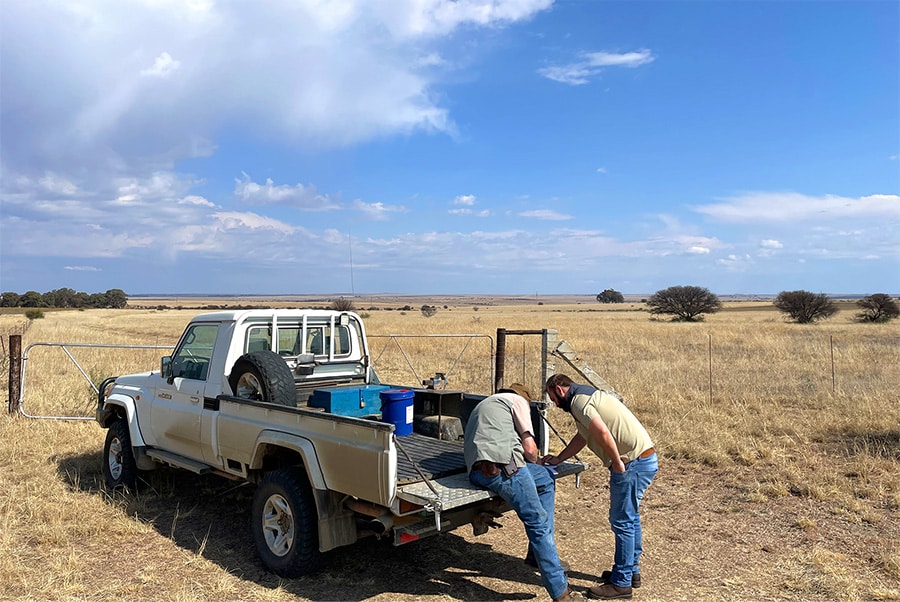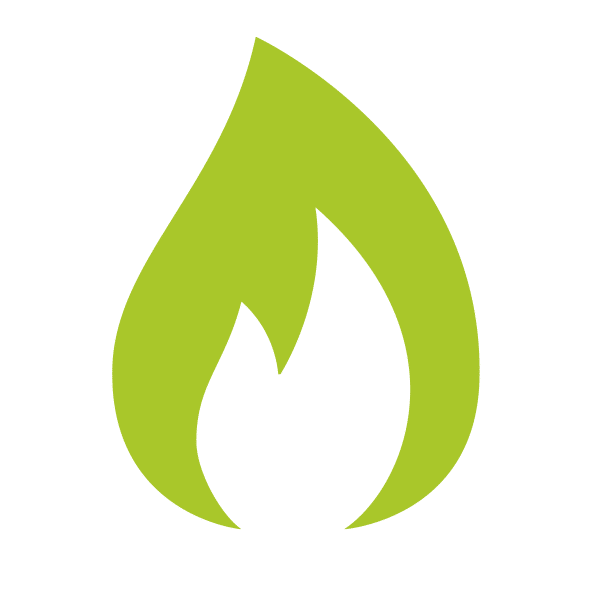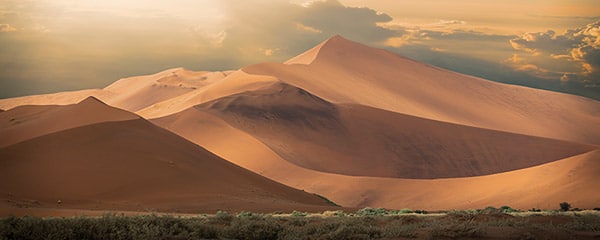Rhino is a privately-owned exploration company focused on delivering low-cost energy solutions to the African continent. The pursuit of energy equality and a just energy transition are the cornerstones of the company’s operations.
In South Africa, Rhino is exploring onshore for biogenic gas, helium, and native hydrogen. Our ambition is to play a role in unlocking the vast energy potential of South Africa to support its economic growth and energy security.
In Namibia, Rhino holds offshore exploration licence PEL85 in the Orange Basin. We are undertaking a two-well drilling campaign to be drilled back-to-back with possible additional activities that could be triggered subject to well results.
Purpose
The pursuit of energy equality and a just energy transition define the company’s purpose.
Mission
To pioneer a new industry model that will generate long-term sustainable value for all stakeholders through the delivery of a focused strategy.
Vision
To become a leading independent E&P that builds scale through organic and inorganic means.
Value Proposition
Leverage a diverse portfolio of high-quality assets, deep technical capabilities, and unique access to growth capital to build a company of scale that can play a role in supporting energy equality and a just energy transition.
Rhino has a proven ability to generate value by leveraging technical capabilities to progress early mover positions in compelling opportunities to the point of value crystallisation. Rhino has also demonstrated its suitability to be a credible counterparty with IOCs and other industry partners.
Producing gas whilst maintaining clean air, water, arable land, and livelihoods is not only Rhino’s commitment but our foundational principle.
Rhino has no interest or ambition in exploring for shale gas or the associated use of hydraulic fracturing (fracking).

From a technical perspective there is no merit to undertake fracking of shales on any part of Rhino’s licenced acreage, today or in the future.
Rhino has no interest or ambition in exploring for shale gas or the associated use of hydraulic fracturing.
We strongly believe our activities must align with the values and interests of the communities in which we operate. We have sought to personally engage as broadly as possible, to explain our purpose and principles, hear and understand any concerns, and align on the proposed activities.
Our proposed exploration corresponds closely with drilling water wells and assay wells: activities very familiar to the Free State. In the event of success, as we move to production we will need to train and employ locally, as well as contract for various business services.
We aim to replace electricity generated by highly polluting and outdated coal-fired power plants by introducing cleaner generation from a domestic gas resource, contributing to the necessary grid flexibility which would unlock South Africa’s extensive solar/wind power potential.
Our ambition is to help alleviate South Africa’s energy crisis by discovering local, dependable, and affordable energy resources, which can be used to reliably power the economy, equitably enable social development, and generate tax revenues for broader growth.

Rhino places a great emphasis on all aspects of Sustainability and seeks to deliver positive socioeconomic impact alongside value creation for its stakeholders through its activities.
As an Operator of a multi-well deepwater drilling campaign in Orange Basin, Namibia, Rhino embraces the responsibility to ensure environmental stewardship and operational excellence at all times. Rhino seeks to deliver to the highest industry standards and aligns itself with Partners, contractors and suppliers who apply the same standards.
Rhino is committed to clear and transparent engagement with all stakeholders to ensure awareness of activities. As the Company continues to grow, its sustainability agenda will evolve to reflect the company’s stages of development.
In Namibia, Rhino is partnered with Azule, the national oil company NAMCOR and a local independent as it seeks to identify commercial hydrocarbons in PEL 85 that can be developed on a standalone basis and play a meaningful role in developing Namibia’s upstream industry.
Rhino is committed to clear and transparent engagement with all stakeholders to ensure awareness of activities.
In South Africa, Rhino is seeking to progress onshore exploration activity with the potential to transform the South African energy landscape. The Company’s focus is on Natural Gas, Helium and Geological Hydrogen; all of which have a vital role to play in a sustainable future. The Company places a great emphasis on community engagement and has actively undertaken Environmental Impact Assessments (EIAs) in preparation for future exploration drilling activities on ER294 and ER318. Producing gas whilst ensuring the sanctity of clean air, water, arable land, and livelihoods is not only Rhino’s commitment but our foundational principle.
Rhino aligns itself with credible IOCs and NOCs in fulfilment of the highest corporate governance and seeks to maintain an appropriate level of transparency and disclosure at all times.


Exploring for energy equality

Methane

Helium
Helium is a rare noble gas with unique thermochemical properties that make it essential for medical imaging, high-tech manufacturing, quantum computing and space exploration.

Hydrogen

AREA (km2): 5209
AWARD YEAR: 2019
AREA (km2): 6058
AWARD YEAR: 2019
AREA (km2): 7975
AWARD YEAR: Pending
AREA (km2): 7635
AWARD YEAR: 2022
AREA (km2): 6441
AWARD YEAR: 2022
AREA (km2): 2278
AWARD YEAR: 2022
AREA (km2): 1184
AWARD YEAR: 2022
For over a century, methane emanating from “blower wells” in South African gold and platinum mines south of Johannesburg have been observed and till only recently puzzled geoscientists as to its source. The ancient host rocks lacked the organic matter typically associated with hydrocarbon formation. The answer, discovered in the 2000s, lies with archaea, extremophile organisms that generate biogenic methane. These archaea combine hydrogen with carbon. The hydrogen comes from two key processes which are radiolysis (water splitting by radioactive decay) and the hydration of iron silicates found in the region’s basaltic rocks. Radioactivity as it decays also produces helium, which mixes with the methane and rises through fractures.


A New Frontier
Rhino has been exploring in Namibia for over a decade, and today holds Operatorship of Block 2914A (PEL 85) in the Orange Basin with a 42.5% participating interest following the completion of a farm-out agreement with Azule in December 2024.
The Orange Basin has become a focal point of industry activity, with multiple well campaigns undertaken by IOCs in recent years. The resulting discoveries in the Basin have progressed the industry’s understanding of this basin with Rhino and partners contributing to the technical progression of the petroleum systems in this frontier basin.
The licence, PEL 85, is located immediately to the east of Shell’s PEL 39 and southeast of Galp’s PEL 83 and south of BW Energy’s Kudu licence.
In December 2024, Rhino commenced an operated drilling campaign with the spudding of the deep-water well Sagittarius 1-X well in water depth of circa 1,400m, followed by the second well Capricornus 1-X well which was spud in mid-February 2025. Both wells encountered hydrocarbon-bearing reservoirs, with the Capricornus-1-X well finding 38m of net pay with no observed water contact and testing light-oil at a surface-constrained flow rate in excess of 11,000 stb/d on a 40/64” choke.
Rhino is now preparing to drill an exploration well on the Volans prospect, also in PEL 85, due to spud in Q3 2025, while continuing to evaluate the drilling results from Sagittarius 1-X and Capricornus 1-X and forward plans.
LATEST NEWS
Capricornus 1-X successfully tests light-oil discovery
Rhino Resources (‘Rhino’ or ‘the Company’) provides the following update on behalf of the PEL85 JV regarding its operated drilling campaign on Block 2914, offshore Orange Basin, Namibia. Petroleum Exploration License 85,
Rhino Resources completes drilling of first exploration well on PEL 85, offshore Namibia
Rhino Resources (‘Rhino’ or ‘the Company’), provides the following update, on behalf of the PEL85 JV, regarding its operated drilling campaign on Block 2914, offshore Orange Basin, Namibia. The Sagittarius 1-X well,
Rhino Resources completes Farmout transaction with Azule Energy
Rhino Resources (‘Rhino’ or ‘the Company’) is pleased to announce the completion of its Farm-Out Agreement with Azule for Block 2914A (PEL85), Offshore Namibia, following confirmation that all customary third-party approvals from
Rhino Resources commences its operated exploration programme offshore Namibia
Rhino Resources (‘Rhino’ or ‘the Company’), a privately-owned company focused on delivering low-cost energy solutions to the African continent, is pleased to announce the commencement of its operated drilling campaign on Block
17 June Upstream:

15 May businesswire:
Rhino Resources and Halliburton Deliver the First Two Exploration Wells on Block 2914 in Namibia
24 April Upstream:
Rhino's Namibia discovery flows 11,000 barrels per day of light oil - Drill stem test operations on Capricornus-1X probe showed 'limited associated gas'
4 Christiaan Barnard
Foreshore,
Cape Town
8001
South Africa
+27 21 203 8718
info@rhinoresourcesltd.com
13 Jan Jonker
Windhoek
Namibia
+264 83 783 7210
office_wdh@rhinoresourcesltd.com








